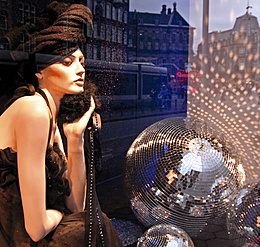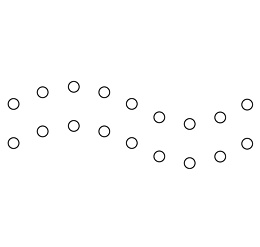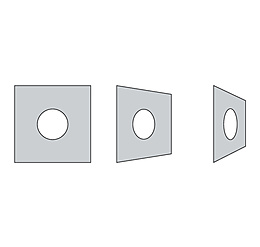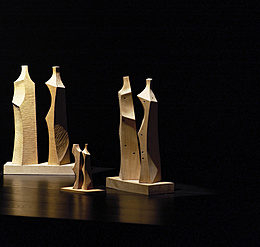The effect that the type of lighting in the room has on
visual perception can be explained with the help of an example. The adjacent figure graphically shows a room in shades of white and grey. The perspective and alignment of the lighting are directed towards the back wall in the room and to the right towards the side wall. On both walls, sharply outlined squares are laid out like pictures. The corner of the room between the two walls is in the same grey as the two picture surfaces.
This figure shows the effect of a continuous
luminance progression on the walls. The progression of the lighter wall towards the grey corner of the room is interpreted as an illumination characteristic, and the reflectivity of the wall is understood as constant. The clearly contoured and uniformly grey picture surfaces are understood as a material characteristic or planar color.
This example shows that light is not only the connecting medium, but is also classified and interpreted by us.











